The Voronoi Texture Cabinet Design
Video Link: The Voronoi Texture Cabinet Design on YouTube
I started this cabinet late last year and finished in early January. My goal was to build something to hold a lot of my CNC accessories — bits, clamps, hold downs, jigs, etc. I modeled up the basic shape in Fusion 360, along with the confines of my CNC machine area so I could make sure it would fit in the spot I wanted it.
Like a lot of my projects, I shared the Fusion 360 CAD file as a free download on my workshop page: Digital File – CNC Machine Cabinet Design
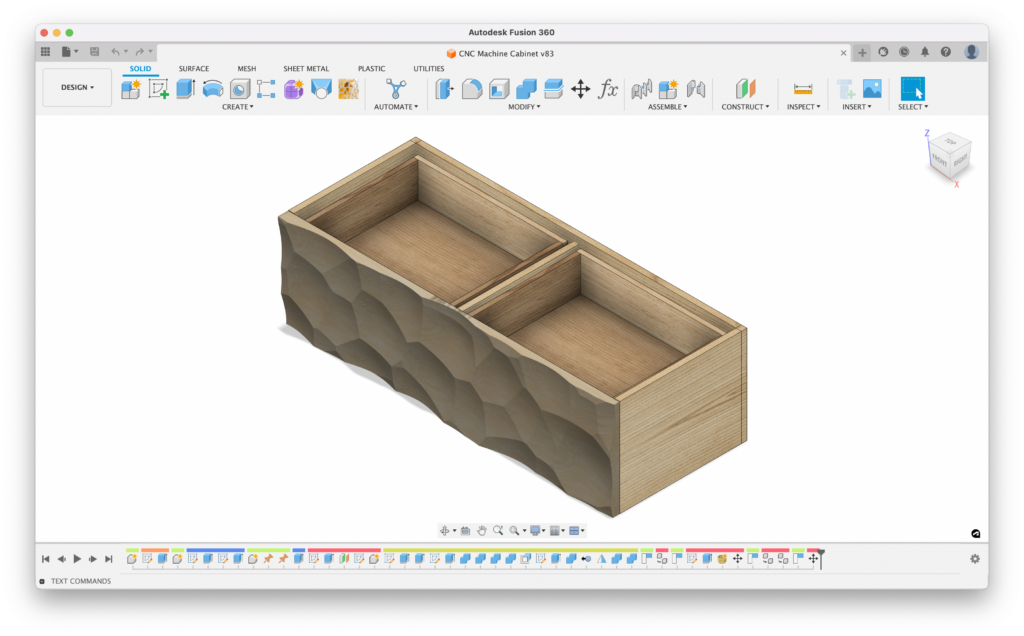
One of my goals was to only use wood that I had from my property in Truckee, California. This was made from some Jefferey pine or white fir. I’m pretty sure it is the pine, and the tree was dropped by the prior owner and left to rot a while. The wood was still good, and I had cut it up with my chainsaw mill a few years back.
I did the front design in Blender, and the file is also available to download from the same link above. I’ve been fascinated with the voronoi texture patterns, and it was fun to play around with this shape to generate something that I thought was pleasing.
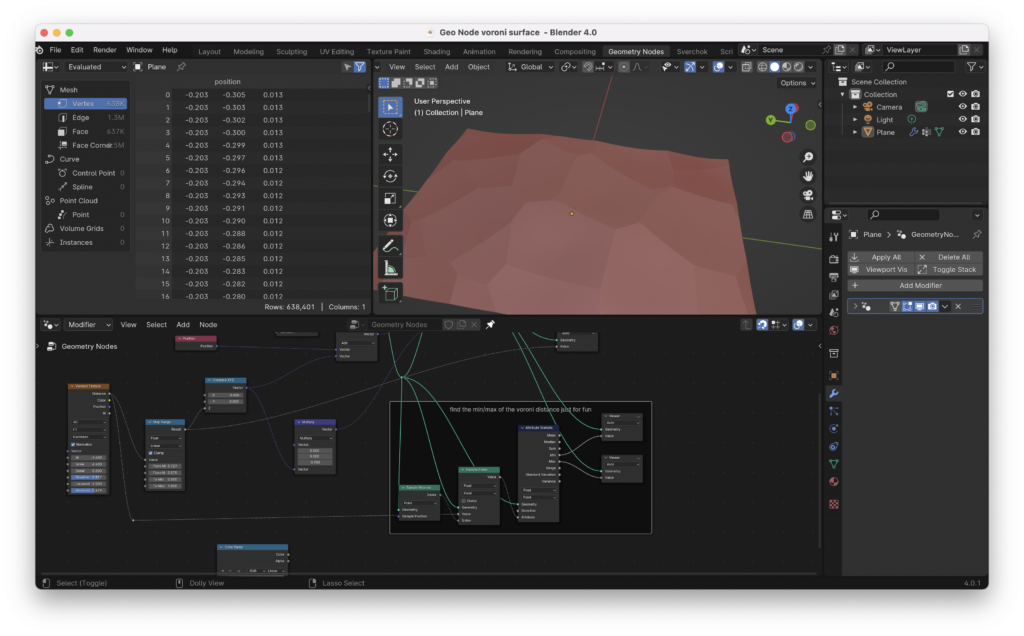
I used Geometry Nodes in Blender, which is a mathematical way of generating shapes using a node structure and flow diagram. Lately I’ve been experimenting with another node structure plugin for Blender called Sverchok, which is amazing, and somewhat similar to Grasshopper for Rhino. However, it has some limitations and performance issues, and fails to work properly on macOS with Blender 4.0.
The drawers are basic dovetails that I did on the CNC machine. I got some chipout in a few locations, and I have some ideas on how to get better results the next time I try something like this.
Here’s a shot of the cabinet in the final resting place under my CNC machine front:
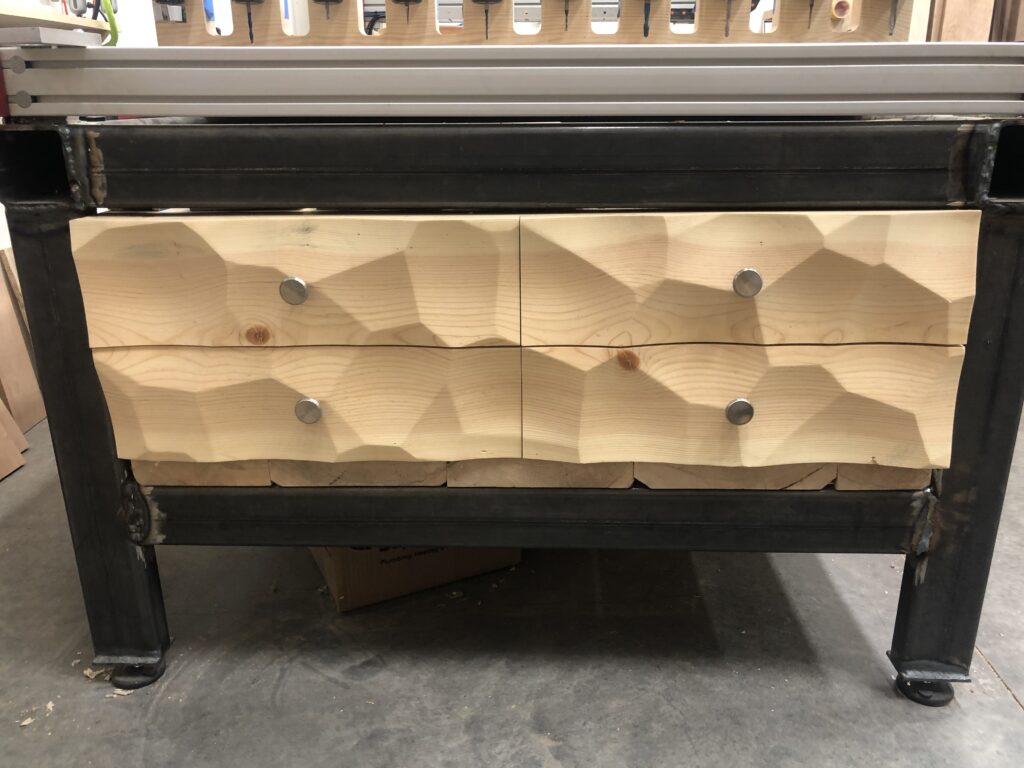
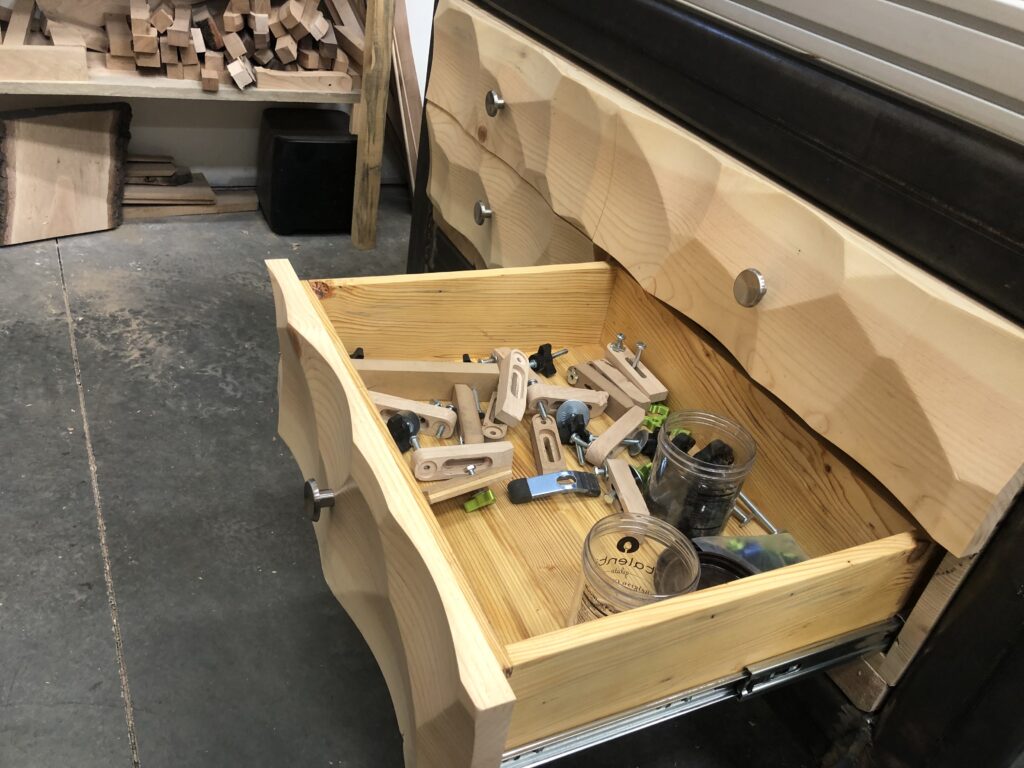
I didn’t want to spend any money on finish, so I used some old clear water based lacquer that I had around from my kitchen cabinet project about 4 or 5 years ago. The spray finish was still usable, even though it was in a container that I had opened up and resealed. The drawers are finished in a basic boiled linseed oil — simply because I have a lot of it, and I don’t like to use it for a lot of things.



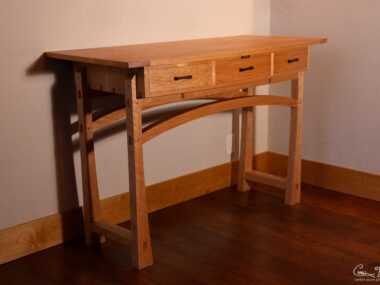


This is so cool! I am looking to build a door with a very similar pattern. Do you have any advice on how to learn to do this in Blender? I am mostly a solidworks guy!
Thank you!
Zach
Oh boy! I’d say skip Blender and use Rhino; Blender is great – I love it – but it has a high learning curve and eventually I ran into limitations on mesh editing and my skills. Rhino is easier, but costs $1000. Rhino also takes time to learn, but Grasshopper is an incredible parametric plugin, but more organic than Solidworks / Fusion. For both..just start on YouTube! Blender Guru is where I started with the donut tutorial.